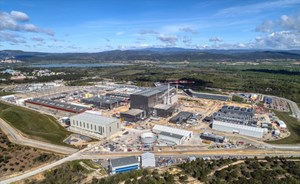|
|
Just north of Place de la Concorde in PARIS is L’église de St-Marie-Madeleine, or St. Mary Magdalene Church. When we first came across La Madeleine, as it is commonly called, we didn’t know it was a church because the building resembles a large Roman temple. There are 52 Corinthian columns that surround the temple, topped with a sculpted frieze at the entrance.
Construction of the church began in 1764, but when the original architect died three years later, his successor demolished the unfinished building, starting from scratch with his own design. The church would now be built to resemble the PANTHÉON, instead of the INVALIDES CHURCH, as was originally planned.
The building was destroyed once again during the French Revolution under Napoleon’s orders. In its place, Napoleon wanted a temple built that resembled the “Maison Carrée”, a Roman temple in Nîmes. The temple honored Napoleon’s army until its function was replaced by the Arc de Triomphe. In 1842, the temple was consecrated as a church, as it remains today.
https://www.travelyesplease.com/photo-of-the-week-la-madeleine-paris/ |
|
|
|
|
Vignon, Church of La Madeleine
The Place de la Madeleine had been consecrated as a site devoted to Mary Magdalene in 1182. During the period known as the First Republic (1792-1804), following the French Revolution, the foundations of earlier sacred buildings were removed and discussions were had as to what to do with the space. As France had been de-Christianized during the Revolution a civic rather than a religious function for the building was decided upon; various suggestions were put forward including a new site for the Bank of France.
Considerations were brought to a halt, however, when in 1804 Napoleon crowned himself Emperor. What followed was one of the most ambitious propaganda programs of the nineteenth century. As well as looting works from the world’s finest collections to display in the newly refurbished Louvre, renamed the Musée Napoleon, some of the greatest artists and sculptors of the age were recruited to exalt the new emperor. It was only fitting that Napoleon would turn to architects, too, to realize his vision of an imperial capital city. Three monuments of particular note were constructed with this end in view: the Arc de Triomphe, the Vendôme Column and the church at the Place de la Madeleine.
It was never Napoleon’s intention to build a church for Mary Magdalene, though. For him the new building would stand as a Temple to the Glory of the Army, and by that, of course, he meant his own imperial army, that well-organized band of marauders who, having defeated the Austrians in the Battle of Austerlitz in 1805, had managed to supplicate a great swathe of Europe. To celebrate their achievement, a competition to select the best design for the Temple was established in 1806 to be judged by to a jury selected from the Imperial Academy. As it turned out, the jury proved academic in more ways than one, their opinions counting for little as, despite their disapproval, Napoleon opted for the designs of one Pierre-Alexandre Vignon (1763-1828).
Vignon, who had trained under the great neoclassical architect Claude Ledoux, envisioned a peripteral temple (a temple surrounded by a single row of columns). Lacking Ledoux’s more visionary character, however, Vignon’s design for the exterior was basically a scaled up version of the Maison Carrée in Nîmes.
Unlike the Maison Carrée though, the portico of La Madeleine has eight columns rather than six. These fluted Roman Corinthian columns – there are fifty-two of them in all – rise up to a staggering twenty meters and encompass the entire structure. The entablature they support is embellished with a bipartite architrave surmounted by a frieze with a decoration of garlands and putti.
While not quite so ornate, the features, in the main, reproduce those found on the Roman temple. The dentils, those repeated teeth-like blocks that ornament the cornice, seem bulkier, however, lending the façade a somewhat more austere character. While the exterior bears the hallmarks of Napoleonic propaganda, evoking the grandeur of Imperial Rome, after his fall, the Bourbon Restoration (1814-30) sought to revive the relationship between church and state. For this reason it was decided, as the temple was still incomplete, to return to the pre-Revolution purpose of the building project, namely to construct a church dedicated to Mary Magdalene.
In contrast to the Napoleonic design of the temple, the pediment frieze, designed by Philippe Joseph Henri Lemaire in 1829, is a masterpiece of Bourbon Restoration propaganda. The subject is The Last Judgment, a centuries-old motif found on relief sculptures above the doors of countless churches and cathedrals. While Lemaire largely follows iconographical convention, depicting Christ the Judge at the center of the composition and on His right the archangel Gabriel with his horn announcing the Day of Judgment and on His left the archangel Michael wielding the sword of justice, it is in the figure of Mary Magdalene kneeling at the foot of Christ that the underlying message of the sculpture is revealed.
Mary Magdalene has very strong connections with France. According to tradition she was among the first Christian proselytizers: after the crucifixion she journeyed to Provence from the Holy Land converting the French to Christianity. She is also, of course—albeit wrongly—often portrayed in art and in literature as a repentant prostitute, as indeed she is here; notice, for example the contrast between the virtuous female figures to the right whose bodies are concealed and her own state of semi-nakedness.
As well as a straightforward Last Judgment, the inclusion of the repentant Magdalene figure has led some to read the frieze as a political allegory in which the damned stand for those who had been involved in the Revolution and who, in the eyes of the restored monarchist regime, were effectively traitors. Given that such a large portion of the French people fell into this category, rather than condemn and punish them, they were called upon to repent of their sins, as Magdalene had done, before being embraced back into the arms of the ruling establishment.
Unlike in England or America say, where public building programmes such as the British Museum or the Capitol exhibit a single-minded confidence, state architecture in France at this period reflects the country’s complex and conflicted political landscape, made up of republicans who had fought for the Revolution, of imperialists who had followed Napoleon and of monarchists who were loyal to the king. The unsettled look and feel of La Madeleine is a prime example of this tendency, particularly so in the striking contrast between the outside of the building and its interior.
On entering the church we are faced with a surprisingly opulent spectacle, especially given the severity of its exterior. Standing in the narthex (porch) of the church, we look up to see a coffered barrel vault, lavishly gilded like the rest of the interior. Above the door is the famous pipe organ on which such composers as Camille Saint-Saëns and Gabriel Fauré played.
Turning around and walking down the long nave, one passes under three large domes, supported by pendentives (triangular sections of vaulting between the rim of a dome and the arches that support it), decorated with colossal relief figures. Each dome is coffered and has a glazed oculus allowing in light, features that obviously recall the Pantheon.
Three pairs of wide bays are thus created, each with pedimented niches supported by ionic columns that serve to form side altars. Far from the classical temple type the exterior would lead us to expect, architectural historians have compared the interior of the church to that of Roman baths; the triple cross-vaults of the Baths of Caracalla, for instance, may well have been in Vignon’s mind when designing those domes.
At the north end is the semi-dome of the apse, under which sits the altar and behind it a wonderfully theatrical statue by Carlo Marochetti of Magdalene being lifted up by angels, a fine example of Romantic sculpture.
Above it, in the cupola of the choir, is Ziegler’s mural entitled The History of Christianity, showing Magdalene ascending into heaven borne by three angels.
Beneath her is Napoleon in his coronation robes, positioned center stage, his figure directly aligned with Christ’s. Facing him is Pope Pius VII, with whom he signed the Concordat of 1801, a document which reestablished the authority of the Catholic church in France after the Revolution and which is alluded to on the scroll the cardinal who stands behind Napoleon carries in his left hand.
It is a curious painting, completed during the July Monarchy (1830-48) when the liberal king, Louis-Philippe, struggled to reconcile those contending political factions. That Napoleon had in fact a very low opinion of the church and sought to limit its powers in France is, of course, neither here nor there.
In this world the revolutionaries, like Magdalene, have repented, Napoleon is shown to have saved the day and the church and by association the Catholic monarchy are restored to their rightful place in the natural order of things. Sadly, for Louis-Philippe, it is a wildly optimistic reimagining of history, one that in the end – as the violent events of 1848, the Year of Revolutions, demonstrated – would prove ill founded.
https://www.khanacademy.org/humanities/renaissance-reformation/rococo-neoclassicism/neo-classicism/a/vignon-church-of-la-madeleine |
|
|
|
|
ITER IN FRANCE

At the centre of the 180-hectare ITER parcel, is the 42-hectare scientific platform where work is currently underway to build ITER. Photo: ITER Organization/EJF Riche, May 2021
The decision to site the ITER Project in southern France was made by the ITER Members in June 2005. Detailed site studies had shown that the 180-hectare site proposed by Europe fulfilled all the technical requirements to host ITER—geological, hydrological and seismic norms, access to water and electricity—and benefitted, what's more, from a rich scientific and industrial environment. ITER's host and neighbour—the CEA Cadarache research centre—played an instrumental part in supporting site studies and in rallying local political players behind the cause of welcoming ITER to France. As the first six-person ITER team moved in at the end of 2005, CEA Cadarache provided the land, the temporary offices, electrical and hydraulic networks, and critical services such as transportation and access to a canteen and an infirmary. It also set up a specific agency, Agence Iter France, to manage France's in-kind and financial contributions to the ITER Project. In addition to contributing to the ITER Project as a member of the European Union, France has made and honoured a number of specific commitments. France has provided the site for the project and carried out preparatory works including clearing and levelling, fencing, and networks for water and electricity. It created an international school for the families of ITER employees, adapted the roads along the ITER Itinerary for the transport of ITER components and contributed (with the European Domestic Agency) to building the ITER Headquarters. At the end of the ITER experimental phase, France will have the responsibility for the dismantling and decommissioning of the site.
The local governments around ITER have also been strongly implicated in the project from the site negotiations phase. The General Councils from the six départements closest to ITER (Hautes Alpes, Alpes de Haute Provence, Alpes Maritimes, Vaucluse, Var and Bouches du Rhône)—together with the Provence-Alpes-Cote d'Azur Regional Council and the Communauté du Pays d'Aix—have contributed a total of EUR 467 million. Actions for ITER in France are coordinated through several administrative bodies. Agence Iter France oversaw the site preparatory works, and it also provides welcome services to ITER employees arriving from abroad and coordinates the transport of exceptional components along the ITER Itinerary. The High Representative for the implementation of ITER in France coordinates the realization of the ITER Project and ensures the representation of France to the ITER Members, the European Domestic Agency for ITER and the ITER Organization. The ITER Industrial Committee seeks to optimize economic consequences for the region by fostering the relationship between ITER and local industry, particularly during the construction and assembly phases of the project. Scientific training toward a career in fusion is promoted through an association of 12 French universities and schools of engineering that now offer a Master's degree in "The Science of Fusion." Today the Regional Prefecture and the Regional Council share the responsibility for the elaboration of a longer-term strategic and economic development plan for the Val de Durance area near ITER, including the question of housing the large influx of workers expected to participate in ITER construction.
INTERNATIONAL SCHOOL

The entrance to the Provence-Alpes-Côte d'Azur International School in Manosque, France.
For international scientists, engineers and project administrators relocating to the area with their families, France has committed to providing bilingual education from nursery through secondary school. The program is open to ITER families as well as to local children interested in an international curriculum. The Provence-Alpes-Côte d'Azur International School situated in Manosque began operating out of temporary housing in 2007 for 130 students aged 3 to 18; enrolment is currently at 880 (2021-2022). Of the 31 nationalities represented at the school, slightly over 60 percent of students are from ITER families. The International School offers six language sections, instruction in eleven languages, facilities for 50 boarders. It also offers a European Section.

The 26,000 square-metre International School, designed by award-winning architects Ricciotti and Battesti, produces electricity through solar panels for 100% of its lighting needs.
Work was carried out between 2008 and 2010 on the permanent school buildings. Financed by the Provence-Alpes-Côte d'Azur Regional Council, the innovative design and environmental sustainability of the school was recognized in November 2010, when the International School was named one of 60 exceptional OECD establishments by the 4th Compendium of Exemplary Educational Facilities of the OECD/CELE" (Organisation for Economic Co-operation and Development/Center for Effective Learning Environments).
https://www.iter.org/org/ITERinFrance |
|
|
|
|
|
LLAVE DE ORO Y DE PLATA AL IGUAL QUE LA MANZANA
|
|
|
|
 Primer
Primer
 Anterior
2 a 6 de 21
Siguiente
Anterior
2 a 6 de 21
Siguiente Último
Último
|

